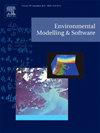环境与健康融合:一个面向深度学习的决策支持系统,用于催化可持续健康食品系统
IF 4.8
2区 环境科学与生态学
Q1 COMPUTER SCIENCE, INTERDISCIPLINARY APPLICATIONS
引用次数: 0
摘要
为了产生应对粮食系统挑战的证据,我们开发了一个适应性框架,用于多模型评估粮食系统中健康和环境驱动因素的趋同效应。我们通过开发一个建模框架来实现这一目标,该框架使用美国食品系统的案例研究来促进测试和应用四种深度学习算法。在预测环境驱动因素和健康驱动因素时,双向长短期记忆和单层长短期记忆模型分别以αE(2.75)和αH(3.51)优于其他模型。所有测试的模型在预测环境驱动因素方面都比健康驱动因素表现得更好。每个维度的最佳表现模型被部署到通过场景进行食品系统快速概述评估(FS-ROAS)工具中。随着我们接近2030年变革性议程的终点,FS-ROAS可以成为一个及时的工具包,使利益攸关方能够在未来粮食系统短期、中期和长期目标的背景下探索各种干预方案,并产生证据来指导未来的行动。本文章由计算机程序翻译,如有差异,请以英文原文为准。
Environmental-Health Convergence: A deep learning-oriented decision support system for catalyzing sustainable healthy food systems
To generate evidence to address food system challenges, we developed an adaptable framework for multimodel assessment of the convergence effect of health and environmental drivers in food systems. We achieved this goal by developing a modeling framework that facilitates testing and applying four deep-learning algorithms using a case study of the United States's food system. Among the models tested, the bidirectional and single-layer long short-term memory models outperformed the others with αE(2.75) and αH(3.51) when predicting environmental drivers and health drivers, respectively. All the models tested performed better at predicting environmental than health drivers. The best-performing model for each dimension was deployed into the Food System Rapid Overview Assessment through Scenarios (FS-ROAS) tool. As we approach the endpoint of the transformative 2030 agenda, FS-ROAS can be a timely toolkit that enables stakeholders to explore diverse intervention scenarios in the context of short-medium and long-term goals for future food systems and generate evidence to guide future actions.
求助全文
通过发布文献求助,成功后即可免费获取论文全文。
去求助
来源期刊

Environmental Modelling & Software
工程技术-工程:环境
CiteScore
9.30
自引率
8.20%
发文量
241
审稿时长
60 days
期刊介绍:
Environmental Modelling & Software publishes contributions, in the form of research articles, reviews and short communications, on recent advances in environmental modelling and/or software. The aim is to improve our capacity to represent, understand, predict or manage the behaviour of environmental systems at all practical scales, and to communicate those improvements to a wide scientific and professional audience.
 求助内容:
求助内容: 应助结果提醒方式:
应助结果提醒方式:


